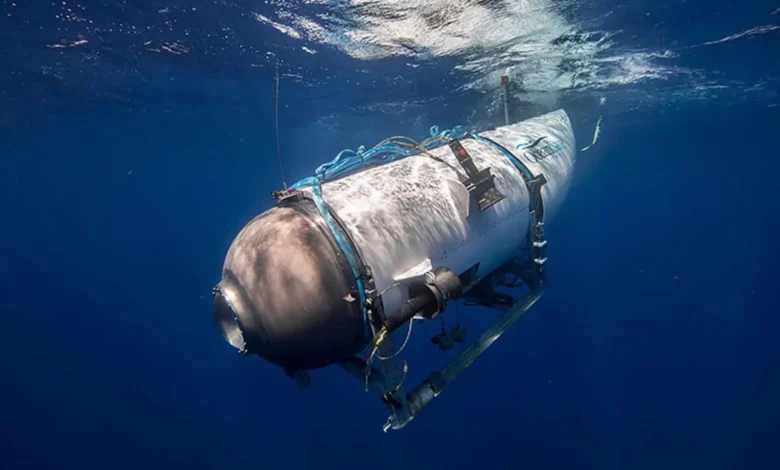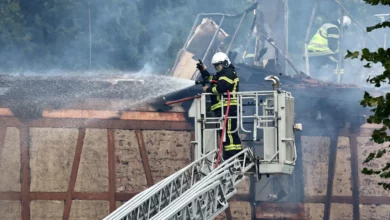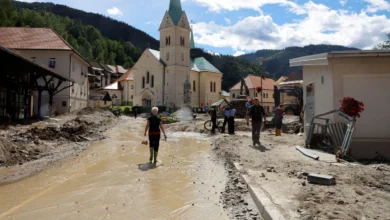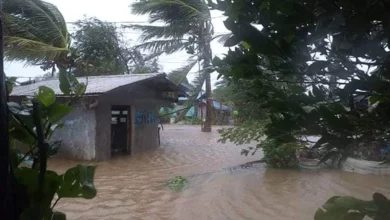
As a remotely operated robot maps out the debris field from the fatal Titan submersible implosion, investigators will be reviewing voice recordings from the mother ship that carried the vessel and its five occupants on its journey to the site of the Titanic wreckage, officials said.
Canadian investigators boarded the ship, the Polar Prince, on Saturday “to collect information from the vessel’s voyage data recorder and other vessel systems that contain useful information,” Kathy Fox, chair of the Transportation Safety Board of Canada, said Saturday.
The crew and family members were also being interviewed aboard the Polar Prince, which returned to St. John’s, the capital of Newfoundland and Labrador, with its flags at half-mast Saturday.
The agency’s mission isn’t to assign blame, but rather “find out what happened and why and to find out what needs to change to reduce the chance or the risk of such occurrences in the future,” Fox said.
A voyage data recorder stores audio from the ship’s bridge. “The content of those voice recordings could be useful in our investigation,” Fox said.
The move is the latest in an expanding international investigation into the implosion, which killed all five people who were aboard the submersible during its descent to the Titanic shipwreck Sunday. Military experts found debris in the ocean – about 1,600 feet from the bow of the Titanic – consistent with the loss of the small vessel’s pressure chamber, US Coast Guard Rear Adm. John Mauger said.
Those killed were Stockton Rush, CEO of the vessel’s operator OceanGate Expeditions; British businessman Hamish Harding; French diver Paul-Henri Nargeolet; and Pakistani-born businessman Shahzada Dawood and his son, Suleman, who were British citizens.
Communications between the submersible and its mother ship will also likely be scrutinized. The ship could communicate with the submersible by text messages, and it’s required to communicate every 15 minutes, according to the archived website of OceanGate Expeditions.
Meanwhile, the Royal Canadian Mounted Police is looking into whether “criminal, federal, or provincial laws may possibly have been broken.”
“There’s no suspicion of criminal activity per se, but the RCMP is taking initial steps to assess whether or not we will go down that road,” RCMP Superintendent Kent Osmond said at a Saturday press briefing, adding the agency investigates all reportable offshore deaths.
OceanGate co-founder Guillermo Sohnlein urged people not to rush judgment over the implosion.
“There are teams on site that are still going to be collecting data for the next few days, weeks, maybe months, and it’s going to be a long time before we know exactly what happened down there,” Sohnlein told CNN on Friday. “So I would encourage us to hold off on speculation until we have more data to go on.”
The US Coast Guard, which was involved in the dayslong search and rescue operation, is also investigating the implosion, along with the National Transportation Safety Board.
Remotely operated vehicles will continue to gather information from the sea floor, Mauger, the US Coast Guard Rear Admiral, said Thursday.
The vehicles will work to map out the vessel’s debris field, which is more than 2 miles deep in the North Atlantic, Mauger said.
Five different major pieces of debris from the submersible were found Thursday morning, officials said. Each end of the pressure hull was found in a different place, according to Paul Hankins, US Navy director of Salvage Operations and Ocean Engineering.
ROV missions are expected to continue for about another week, according to Jeff Mahoney, spokesperson for Pelagic Research Services, a company that specializes in ocean expedition.
Any attempts to recover anything from the debris field will warrant a larger operation in tandem with Deep Energy, another company helping with the mission, because the debris will likely be too heavy for Pelagic’s ROV to lift by itself, Mahoney told CNN on Friday. The recovery efforts would include using rigged cabling to pull up any debris.
Questions about Titan’s design
The multinational investigation comes amid mounting questions about the Titan’s design.
A CNN review of OceanGate’s marketing material, public statements made by Rush and court records show that even as the company touted a commitment to safety measures, it rejected industry standards that would have imposed greater scrutiny on its operations and vessels.
The company strayed from industry norms by declining a voluntary, rigorous safety review of the vessel, according to an industry leader.
And when submersible expert Karl Stanley was aboard the Titan for an underseas excursion off the coast of the Bahamas in April 2019, he felt there was something wrong with the vessel when loud noises were heard and sent an email to Rush, the CEO of OceanGate Expeditions, sounding the alarm on suspected defects.
“What we heard, in my opinion … sounded like a flaw/defect in one area being acted on by the tremendous pressures and being crushed/damaged,” Stanley wrote in the email, a copy of which has been obtained by CNN.
“From the intensity of the sounds, the fact that they never totally stopped at depth, and the fact that there were sounds at about 300 feet that indicated a relaxing of stored energy /would indicate that there is an area of the hull that is breaking down/ getting spongy,” Stanley continued.
When asked for comment about Stanley’s email, a spokesman for OceanGate told CNN they were unable to provide any additional information at this time.
CNN’s Zenebou Sylla, Gloria Pazmino, Cole Higgins, Zoe Sottile, Rob Frehse, Paul P. Murphy, Gabe Cohen, Isabelle Chapman and Curt Devine contributed to this report.




